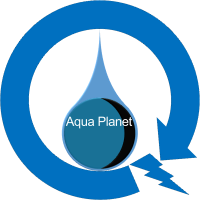Goal1: Eradication of extreme poverty and hunger
1. Improved health due to reduction ofwater-related diseases results in increase in productivity and householdlivelihood security. It is estimated that over 10million productive days wouldbe gained if there is 100% access to both water and sanitation.
2. Reduction in household expenditure on illnessescaused by unsafe drinking water and inadequate sanitation.
3. Time saved from collecting water can be used forother livelihood activities. Lack of water and sanitation aggravates poverty.Nearly 1 out of 2 households in the poorest quintile spend more than 30 minutesa day to fetch water in Nigeria.
4. Improved health and growth especially amongchildren due to reduction of water and sanitation related diseases especiallyworms which rub their hosts essential nutrients and calories.
5. Water is a major factor of production inagriculture, industries and other economic activities that provide livelihoodsfor people.
6. Improved livelihood especially for the poor as aresult of reduction in ecosystem degradation and reduction in vulnerability towater-related diseases.
7. Water especially from the dam is a direct inputto irrigation for improved food production.
Goal 2: Achieve Universal Primary Education
1. Increase in school enrolment, attendance andcompletion rates especially for girls due to time saved from fetching water.
2. Reduction in Water and Sanitation relateddiseases improves school attendance.
3. Provision of Water and separate Sanitationfacilities for girls in schools increases their school attendance especiallyfor menarche.
4. Improved water resources management reduces theincidence of flood that often interrupts educational attainment.
Goal 3: Promote Gender Equality and Empower women
1. Reduction in time spent and burden in fetchingwater give women more time for other productive activities, adults education,leisure and other empowerment activities.
2. Provision of water and sanitation facilitiescloser to home reduces the incidence of sexual harassment/assault whilesearching for water and privacy for defecation.
3. 2.2 million deaths of children are preventableglobally through provision of safe drinking water, basic sanitation andimprovement in hygiene behavior
4. Involvement of women on community management ofwater and sanitation facilities promotes women empowerment for leadership andnetworking opportunities.
Goal 4: Reduce Child Mortality
1. Improved access to Water and Sanitationfacilities contribute significantly to reduction of infant and child morbidityand mortality. Diarrhea is the second largest direct cause of childhoodmortality in Nigeria and is a major contributing factor to malnutrition.Improving safe disposal of diarrhea by 34% and when combined with hand washingat critical times, the impact can be doubled. Globally (0 – 14 years) areattributed to unsafe drinking water, inadequate sanitation or insufficienthygiene
2. Provision of safe drinking water and sanitationfacilities in health-care facilities help ensure clean delivery and reduceneonatal deaths.
3. Improved nutrition and food security reducessusceptibility to diseases. Well managed water resources help poor people tomake a decent living and increase their household income which can be drawnupon in caring for their children when need.
Goal 5: Improve Maternal Health
1. Improved health and nutrition due to reductionin water-related diseases reduce susceptibility to anemia and other conditionsthat affect maternal mortality.
2. Provision of safe drinking water and basicsanitation in health-care facilities ensure basic hygiene practices during andafter delivery.
Goal 6: Combat HIV/AID, Malaria and other Diseases
1. Provision of safe drinking water and basicsanitation reduces opportunistic infections from water-related diseases anddiarrhea is a major opportunistic infection affecting people living withHIV/AIDS.
2. Improved health and nutrition occasioned byimproved water resources management reduces susceptibility to/severity ofHIV/AIDS and other major diseases.
Goal 7: Ensure Environmental Sustainability
1. Safe disposal and management of excreta andwastewater contribute to less pressure on freshwater resources.
2. Improved sanitation contributes significantly toreduction in surface water contermination thereby protecting human andenvironmental health.
3. Inadequate access to safe water and basicsanitation are some of the major characteristics of slum.
4. Improved water management, including pollutioncontrol and water conservation is critical for maintaining ecosystemsintegrity.
5. Promotion of integrated water resourcesmanagement within river basins enhances preservation of ecosystem health.
Goal 8: Global Partnership for Development
1. Water and Sanitation services cut across all theother MDGs thereby providing platform for inter-sectorial collaboration andpartnership among relevant institutions.
2. Integrated water resources management providesplatform for cross-boundary partnership for development.

